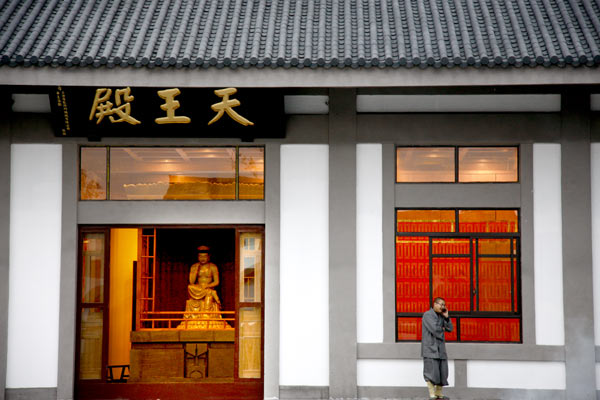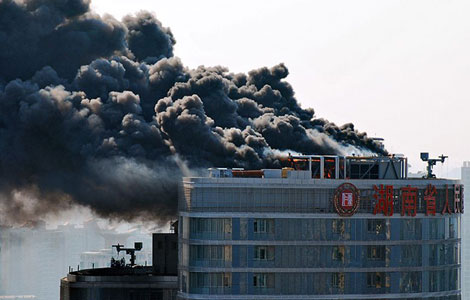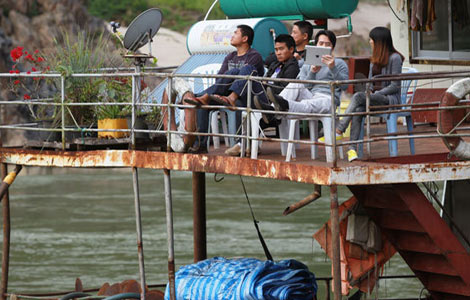For spiritual lift, Buddhists now have old elevator plant
Updated: 2011-12-10 08:04
By Xu Junqian (China Daily)
|
|||||||||||

SHANGHAI - In a remote western corner of this metropolis is an old elevator factory that has not so much been renovated as reincarnated.
The compound, which had stood abandoned for years, will reopen this weekend as the new Wanfo Buddhist Temple, becoming the first development of its kind in China.
Instead of yellow walls and upturned eaves, two of the most distinguishing characteristics of traditional Chinese temples, Wanfo has whitewashed walls and simple dark green tiles.
However, the lotus pond, towering trees and array of bronze or stone statues give this building a necessary air of holiness and tranquility, setting it apart from the surrounding industrial park.
"The city, if not the whole country, has had enough of what critics call 'clumsy ancient temples'," said a monk at the temple, who spoke on condition of anonymity. "The fact is, though, we can never surpass our ancestors. So we decided to build a new temple - one that is simple, practical and modern."
Reconstruction of the leased site, which is less than 10 kilometers from Shanghai's Hongqiao Airport, took four years and was funded by Buddhist groups in the city.
Although details on the cost of work remain sketchy, chief architect Yu Zongqiao said that recycling the disused factory was at least 30 percent cheaper than if construction had been started from scratch.
|
 A monk makes a phone call on Monday outside the main hall of Wanfo Buddhist Temple, which is in a compound renovated from a disused elevator factory in Shanghai. Xu Xiaolin / for China Daily |
"Of course, there were tough challenges during the initial planning stage," he said. "One was the roof on the main hall. We needed to make the roof as light as possible, because the factory building was not originally designed to have a heavy and artistic roof."
The main hall, which was once the main workshop area, covers more than 1,000 square meters and can hold 1,000 people.
"Due to the space and its high ceilings, we were quickly able to envision the temple hall," Yu said.
"In the end, we left four concrete pillars undecorated, as a kind of remembrance."
The highest element of the compound, which is made up a dozen buildings, is now an 11-story pagoda, which has a relief of a Buddhist figure on every floor. It was built using an old elevator-testing well, as "I wanted to make full use of everything for efficiency and to be eco-friendly", Yu added.
Wanfo Buddhist Temple will host an invitation-only ceremony on Saturday to mark the end of the project, and will officially open to the public on Sunday.
The latest data from Shanghai's ethnics and religion office showed the city has 98 Buddhist temples open to the public, with 1,163 monks, nuns and related workers.
Although it is difficult to calculate the number of Buddhists in Shanghai, temples have accepted 434,900 visitors in the past year, while more than 7.24 million people have participated in events at Buddhist sites.
China Daily
Hot Topics
HIV/AIDS, Egypt protest, Thanksgiving, climate change, global economic recovery, home prices, high-speed railways, school bus safety, Libya situation, Weekly photos
Editor's Picks

|

|

|

|

|

|






